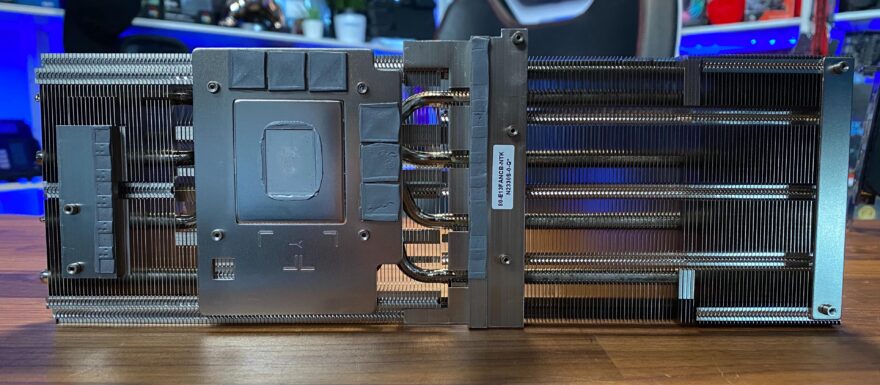AMD Radeon RX 7700 XT 12GB Graphics Card Review Featuring XFX QICK 319
Andy Ruffell / 1 year ago
A Closer Look
Now from a first glance, the QICK 319 looks pretty identical to the MERC 319 series but there is some small differences, mainly in terms of the colour. It’s all black, and being honest, I prefer it to the silver bezels around the shroud and fans on the MERC series. It’s still a long card at 335mm long, 116mm high and 52mm thick and coming in at 1270 grams so actually quite light in the grand scheme of things.
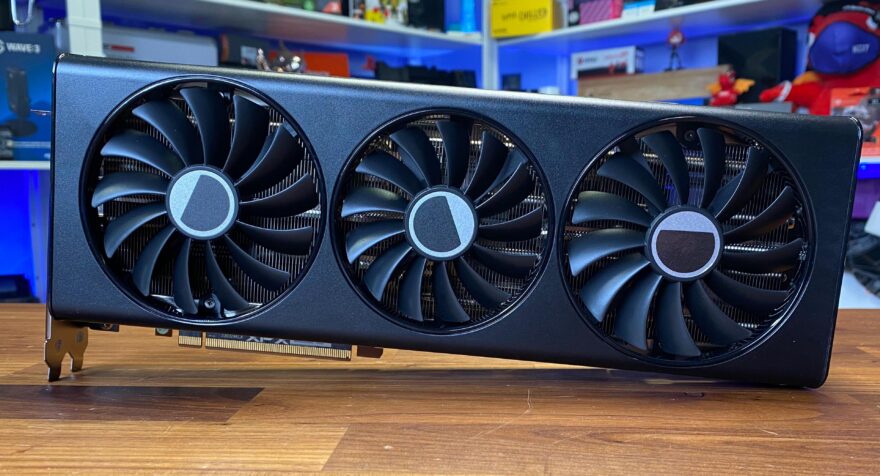
I’ve said it time and time again, but XFX have definitely steered away from the gamery look that other brands have and have gone more simplistic, and it shows, but it also works with its triple fan cooler that includes two 100mm fans on the outer edges, while a single smaller 90mm fan sits in the middle. What is interesting is how all of the fans spin the same way, which is the opposite to what a lot of brands have been doing as of late with alternating fans.
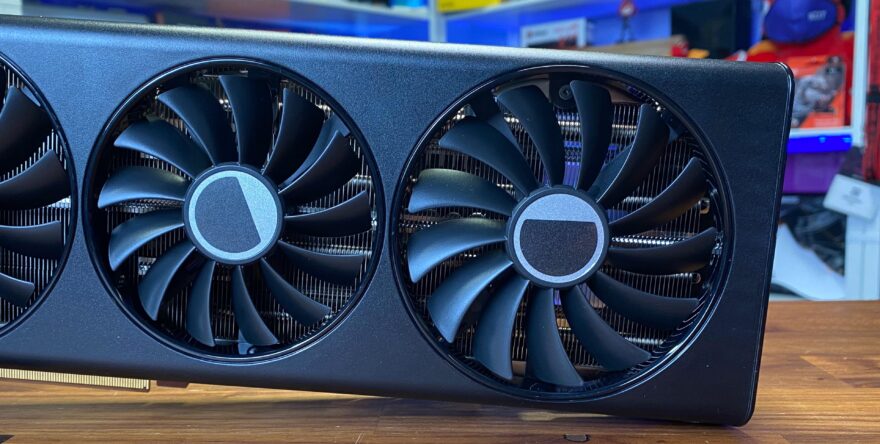
There isn’t much to say about the shroud, other that it feels solid, even though it’s made from plastic, but wraps around the edges of the card in a uniform fashion which makes the whole card look sleek and being all black means that it should tie in with any type of system or theme.
On the side, we get our first glimpse of the large heatsink and some subtle XFX and Radeon branding which is where the full metal backplate wraps around to meet with the front shroud. Again, finished in black.

The backplate is large and is split into a metal section which covers the entirety of the PCB, while a further section made from plastic continues passed the PCB and has an angular cut-out for heat to escape from, though with plenty of ventilation on the backplate, I do wonder if it’s necessary.

The I/O is dual slot, and includes three DisplayPort connectors and a single HDMI while the rest of the bracket is taken up by stamped ventilation along with a stamped XFX logo.
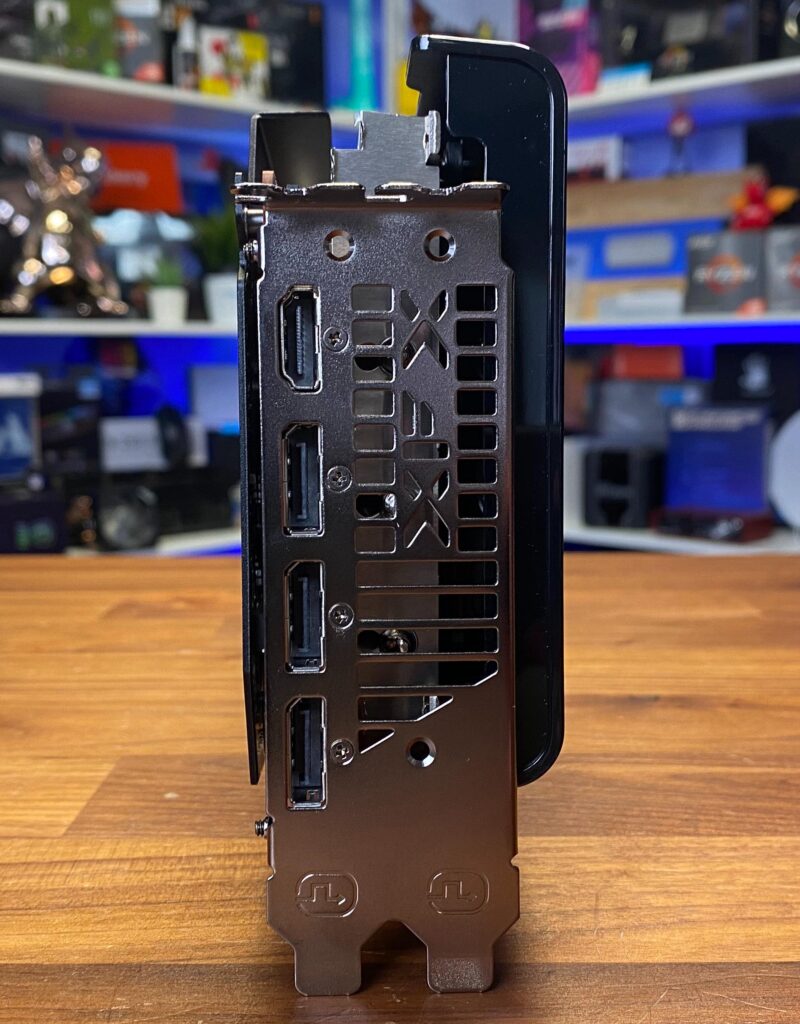
Looking at the PCB, there’s nothing out of the ordinary, with a large design that includes two columns of VRM circuitry next to the GDDR6 ICs that surround the core itself. In the top left corner, we have a BIOS switch which is especially handy if troubleshooting any issues or wanting to overclock.
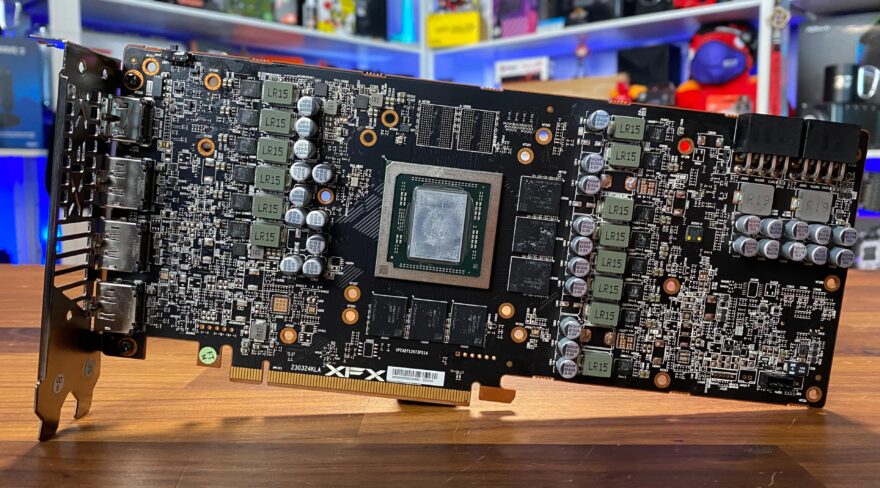
There are two 8-pin power connectors in the top right which help to power the 14 digital phases and help to provide an extra 20W over the reference 7700 XT spec.
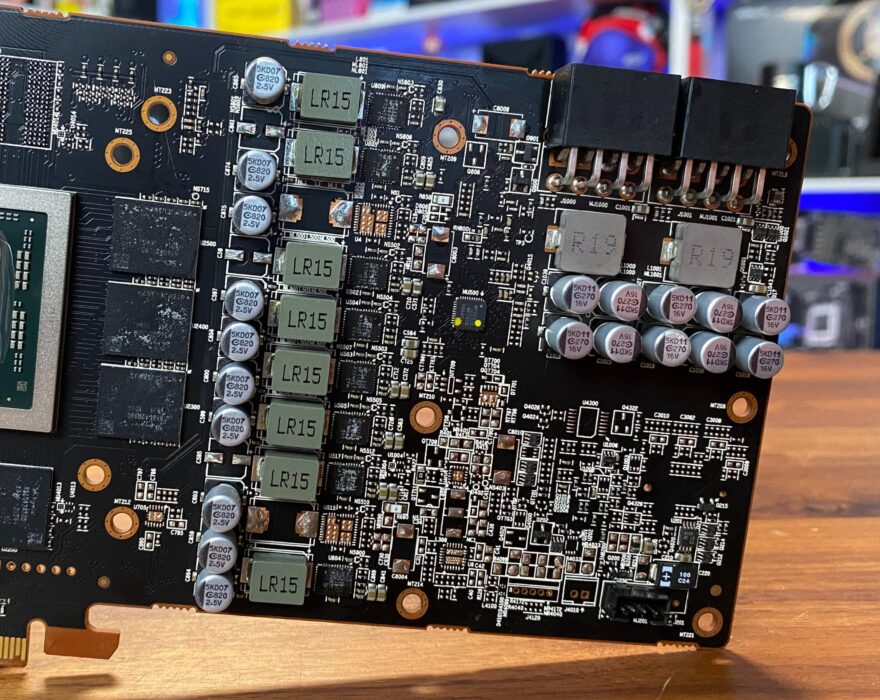
The phases are split between 8 for the GPU, 2 for the SOC, 2 for the memory and a further 2 for other components such as the IO.
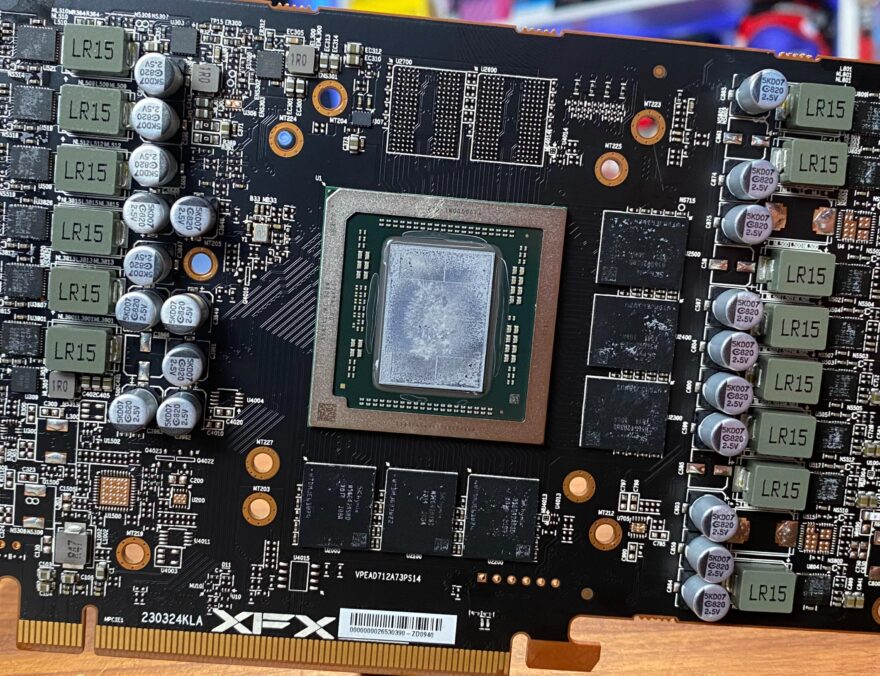
For cooling, XFX have gone with a large heatsink with a nickel-plated copper cold plate that makes direct contact with the GPU core and memory ICs and then transfers heat through the five 6mm heat pipes that span the length of the heatsink. XFX’s MERC 319 series takes this a little further through use of a vapor chamber cooler, but for this series, it helps to keep the costs down.
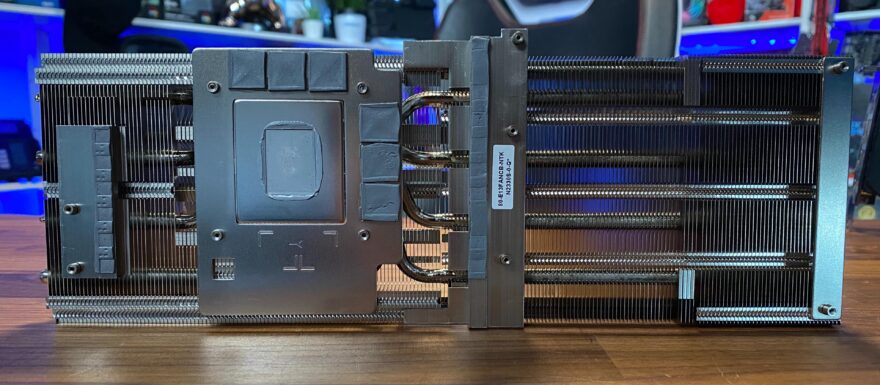
The heatsink is extremely large and are what XFX class as a premium aluminium heatsink with the heatpipes protruding out of the end.
